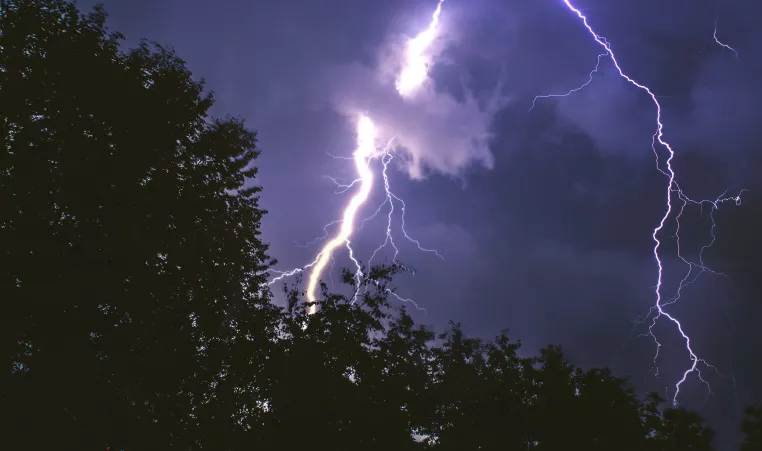
Water and electricity don't mix. When it comes to summer weather in Iowa, lightning is one of the most dangerous—and deadly—threats to swimmers. Each spark can span over five miles in length, reach temperatures hotter than the surface of the sun and contain 100 million volts of electricity.
Lightning doesn't strike lakes or rivers as much as land, but when it does, it spreads out over the water. Swimming pools are connected to underground pipes, gas lines and wiring that give the lightning ability to spread on land, too.
Here are 5 tips to stay safe during inclement summer weather:
- DESIGNATE A RESPONSIBLE PERSON AS THE WEATHER SAFETY LOOKOUT. This person—similar to a Water Watcher—keeps an eye on the weather.
- WHEN THUNDER AND/OR LIGHTNING ARE FIRST NOTICES, USE THE FLASH-TO-BANG (F-B) METHOD TO ESTIMATE HOW FAR AWAY IT IS AND HOW SOON IT'LL ARRIVE. This measures the time from seeing lightning to hearing thunder. For every five seconds from F-B, lightning is one mile away. For example, a F-B of 10 seconds means the storm is probably 2 miles away. Water should be evacuated at a Flash-to-Bang count of thirty.
- TAKE SHELTER IF YOU'RE OUTSIDE DURING INCLEMENT WEATHER. If you can't, either stay low in the boat or retreat to a cabin. Don't use electronic equipment, either!
- DON'T GET BACK IN THE WATER UNTIL 30 MINUTES AFTER THE LAST THUNDER IS HEARD. Strikes of lightning can be 5-8 miles away from each other and still hit you.
- TEACH THIS SAFETY SLOGAN! "If you can see it, flee it; if you can hear it, clear it."
This information was obtained by the National Lightning Safety Institute and Ocean Today.





